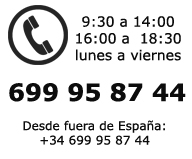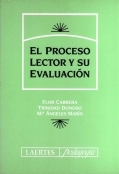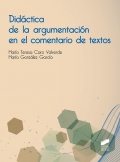- Cuadernos para adultos
- Educación
- Educación artística
- Educación especial/NEE
- Educación física
- Diccionarios
- Escuela
- Estimulación precoz
- Guías para padres
- Infantil y juvenil
- Libros de juegos y actividades
- Lingüística
- Logopedia
- Pedagogía
- Pruebas y protocolos
- Psicología
- Refuerzo escolar
- Salud
- Sociología
- Temas de autoayuda
- Terapias complementarias
- Tercera edad
- Promociones
REGISTRO
Reading in pairs. Peer tutoring for reading and speaking in English as a foreing language
Marta Flores, David Duran Gisbert, Lluís Albarracín
Reading in pairs is an educational programme based on peer tutoring to improve the reading and speaking skills in English as a foreign language, in Primary and Secondary schools, particularly from 10 to 14 years old.
Based on previous programmes (such as Leemos en pareja, a book that is also part of this series of publications), Reading in pairs organises students in pairs and makes the most of the difference in ability of the members, so that they both learn from each other.
One of the students acts as the tutor, the person who helps their partner by facilitating the learning process, and the other fulfils the role of the tutee, who learns from the help offered by the tutor.
The activities that go with this programme are based on authentic texts, and aim to help improve the participants’ fluency and reading comprehension in English. These activities also maximise the time the students are exposed to and can practice the language. There are also supporting resources, such as conversation scripts or guidelines, which encourage active listening, and the exchange of feedback between the members of the pair.
Reading in pairs also encourages the involvement of the participants’ family members as a way to give the students more exposure to the language outside the classroom.
This publication describes Reading in pairs in detail, and offers practical materials and resources for the students and their families. You can find the Audio File of each Activity Sheet in the GRAI webpage grupsderecerca.uab.cat/grai/. The objective of this book is to encourage teachers to put this programme into practice, and to adapt it to their students’ needs and profile.
Tambien disponible en:
CHAPTER 1. CONCEPTUALS FOUNDATIONS
1. Peer tutoring, students learn by teaching
2. English as a foreign language: reading and speaking competence
3. Family involvement
4. Teachers’ and schools’ network
CHAPTER 2. READING IN PAIRS, OBJECTIVES AND CONTENTS
1. Reading in pairs, contribution to key competences
2. Primary education
3. Secondary education
CHAPTER 3. PROGRAMME DESCRIPTION
1. Pairing students
2. Initial training for students and families
3. Activities in tutoring sessions
4. Activity sheets preparation
5. Pair’s self-assessment
6. Extra activities
7. Timing of the programme
CHAPTER 4. ASSESSMENT CRITERIA AND ACTIVITIES
CHAPTER 5. GUIDELINES FOR THE IMPLEMENTATION OF THE PROGRAMME
1. General orientations
2. The teacher’s role during the sessions
3. Problem-solving during the implementation of the programme
CHAPTER 6. TEACHING RESOURCES
1. Expectations and mutually adjusted representations
2. Resources for families
3. The GRAI website
CHAPTER 7. READING IN PAIRS EXPERIENCES’ INITIAL RESULTS
1. Reading comprehension improvement
2. Improving oral communication skills
CHAPTER 8. READING IN PAIRS NETWORK
1. Network’s operation
2. Some results and potentialities
3. What we have learnt from the network
CHAPTER 9. MATERIAL FOR STUDENTS
1. Presentation of the Reading in pairs programme
2. Initial Assessment (one example per stage)
3. Tutor and tutee’s role
4. Pair’s negotiation of roles
5. Tutors’ orientations
6. Activity Sheets: creation criteria
7. Activity Sheets (three examples per stage)
8. Teachers’ observation grid
9. Pair’s Self-Assessment
10. Reflective questionnaire for individual work
11. Final Assessment (one per stage)
12. Final Assessment Questionnaire – Tutors Role
13. Final Assessment Questionnaire – Tutees Role
14. Final Assessment Questionnaire – Reciprocal Peer Tutoring
CHAPTER 10. MATERIAL FOR FAMILIES
1. Presentation of the Reading in pairs programme
2. Orientation for the family tutor
3. Activity Sheets and language supports
4. Answer Key to the Activity Sheet
5. Web listing
6. Diary for the Reading in pairs sessions at home
7. Assessment Questionnaire
Editorial: Horsori
ISBN: 9788415212799
Idioma: Inglés
Encuadernación: Rústica
G R A T I S
TIENDA

-
La obra ofrece una visión muy completa y actualizada sobre la naturaleza del proceso lector hasta ahora no abordada en ninguna ot...11.87 €
-
Presenta la investigación coral sobre el espacio que ocupa el libro ilustrado de no ficción para niños y jóvenes. Se proponen clav...25.50 €
-
Este libro es pionero en ofrecer un diseño específico y riguroso de las claves y los procesos didácticos que preparan el desarroll...27.50 €
-
Este libro trata sobre la detección, evaluación, orientación e intervención educativa en relación con el alumnado que presenta dif...18.50 €


















